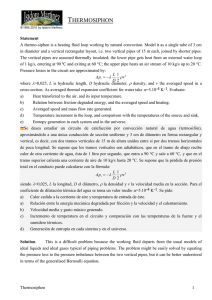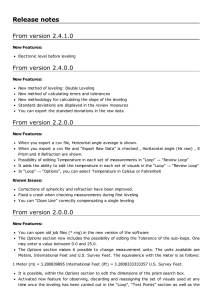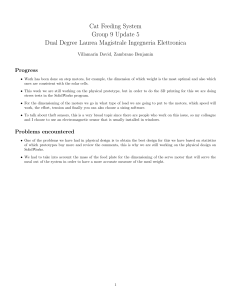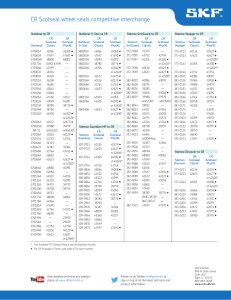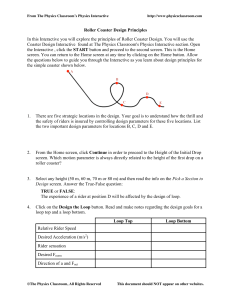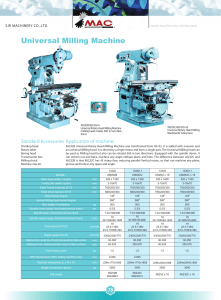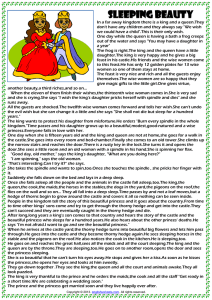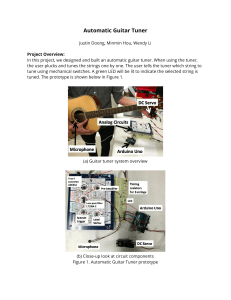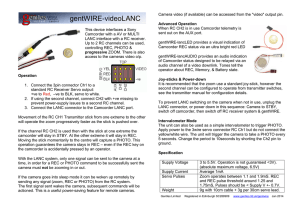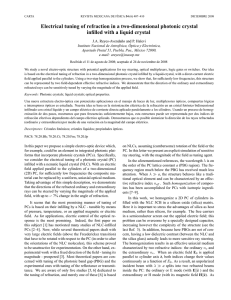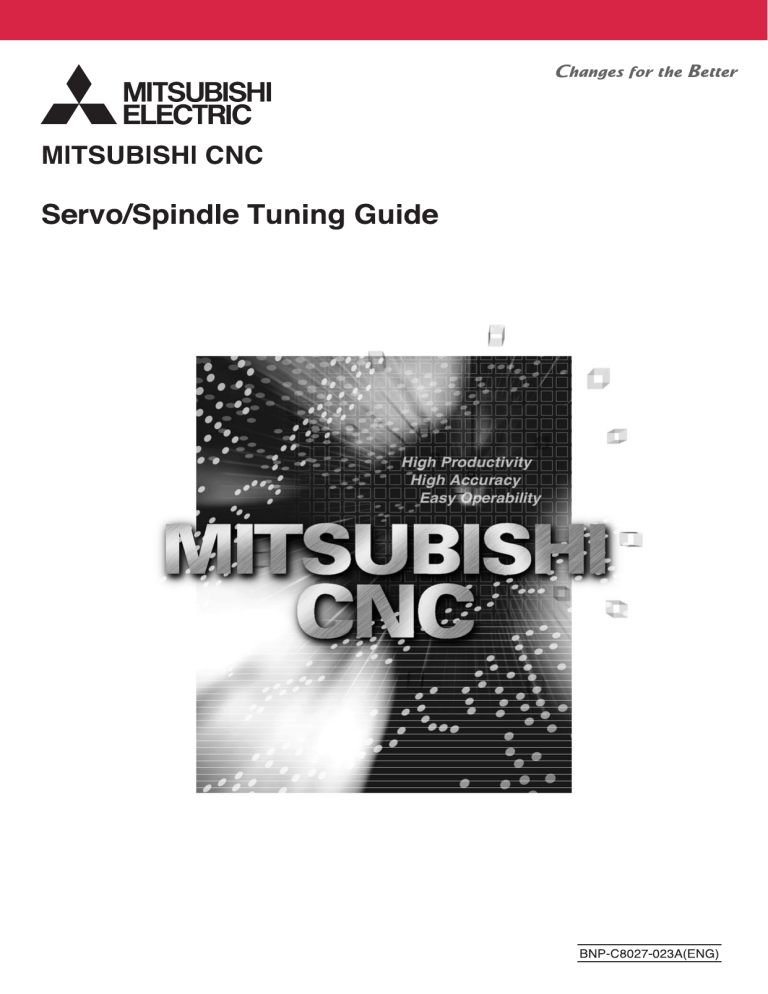
This manual explains the servo/spindle tuning so that the configured machine will be ready for the mechanical
adjustment.
Note that retuning is necessary when performing the following items:
- Roundness measurement
- Synchronous tapping adjustment
- Adjustment for the shortest and optimum acceleration/deceleration
- Actual machining test
Refer to the following manuals.
MDS-D/DH Series Instruction Manual (IB-1500025)
MDS-D-SVJ3/SPJ3 Series Instruction Manual (IB-1500193)
MS Configurator Instruction Manual (IB-1500154)
CAUTION
1. Items related to servo tuning
Keep the axis from collision when moving it.
2. Items related to spindle adjustment
Do not adjust when possible risks associated with adjustment procedures are not thoroughly taken into
consideration.
Before tuning, ensure the safe operation at the maximum rotation speed.
Be sure to break in the machine before tuning.
Be careful when touching rotating section, or your hand may be caught in or cut.
Changing of parameters has to be done carefully.
CONTENTS
1 Introduction ..................................................................... 1
1.1 Aims of Servo/Spindle Tuning.................................................................................... 2
1.2 General Description of Servo Axis Control................................................................. 3
1.3 Speed loop gain ......................................................................................................... 4
1.4 Position loop gain....................................................................................................... 6
1.5 Relation of Speed Loop Gain and Position Loop Gain............................................... 8
1.6 Load inertia ................................................................................................................ 9
1.7 Resonance frequency ................................................................................................ 9
1.8 Acceleration/Deceleration Time Constant.................................................................. 9
1.9 General Description of Spindle Control.................................................................... 10
1.10 NC Screen.............................................................................................................. 11
1.10.1 Parameter Screen........................................................................................... 11
1.10.2 Drive Monitor Screen ...................................................................................... 12
1.11 MS Configurator ..................................................................................................... 13
2 Servo Tuning Procedure .............................................. 15
2.1 Flow of Servo Tuning ............................................................................................... 16
2.2 Setting Initial Parameters ......................................................................................... 17
2.2.1 Servo Parameters ............................................................................................. 17
2.2.2 Axis Specifications Parameters ........................................................................ 17
2.2.3 Machine Error Compensation Parameters........................................................ 18
2.3 Setting Resonance Frequencies .............................................................................. 19
2.4 Measuring Load Inertia Ratio ................................................................................... 22
2.5 Setting the Speed Loop Gain ................................................................................... 24
2.6 Setting the Position Loop Gain................................................................................. 28
2.7 Setting the Acceleration/Deceleration Time Constant.............................................. 30
2.8 Measuring Waveforms and Tuning .......................................................................... 32
2.8.1 Waveform Examples after Tuning..................................................................... 32
3 Spindle Tuning Procedure ........................................... 37
3.1 Flow of Spindle Tuning............................................................................................. 38
3.2 Setting Initial Parameters ......................................................................................... 39
3.3 Checking the Operation and Tuning ........................................................................ 40
3.3.1 Checking the Operation toward Maximum Rotation Speed .............................. 40
3.3.2 Setting the Acceleration/Deceleration Time Constant ...................................... 41
3.3.3 Tuning in Orientation......................................................................................... 43
3.4 Measuring Waveforms ............................................................................................. 44
3.4.1 Waveforms in Acceleration/Deceleration .......................................................... 44
3.4.2 Waveform in Orientation ................................................................................... 45
3.4.3 Others ............................................................................................................... 45
3.5 Waveform Examples and Tuning Methods .............................................................. 46
3.5.1 Waveforms in Acceleration/Deceleration .......................................................... 46
3.5.2 Waveform in Orientation ................................................................................... 52
1
Introduction
1
MITSUBISHI CNC
1 Introduction
1.1 Aims of Servo/Spindle Tuning
Servo/spindle tuning aims at the following two points:
(1) To achieve machine's high performance
Servo/spindle parameter standard values allow a machine to successfully operate in spite of some
inertia. However, conditions connected to the motor (inertia, machine's configuration and specifications
(accuracy-oriented or efficiency-oriented), etc.) are not involved in the values. Therefore, the machinespecific optimum setting is required.
(2) To find and solve problems
Waveforms are not irrelevant to the machine's faults, unsatisfactory machining results or servo/spindle
alarms.
As the inertia increases, the current value will also increase. If machining surface is not good, the
factors may be shown in the waveform (if not shown, mechanical factor will be assumed). If an alarm
occurs, an abnormal waveform will be surely found. Thus, problems and countermeasures (retuning,
replacing of machine parts or mechanical readjustment) will be clarified by measuring waveforms and
tuning.
Tuning is also used as a "life extension measure": if a machining failure occurs due to mechanical
friction, the machine is basically not allowed to operate until the parts are replaced. However, tuning
under the current state allows the machine to be used in the meanwhile.
2
Servo/Spindle Tuning Guide
1.2 General Description of Servo Axis Control
1.2 General Description of Servo Axis Control
Servo axis control is to keep the axis at the cyclically-commanded position (at every communication cycle
between NC and servo amplifier) and at the commanded feedrate (rotation speed).
During axis stop
Control
No rotation.
Keep the commanded position!
Machine
Table
Disturbance (pushing force)
Tension (returning force)
Tension is produced to keep the commanded position.
During axis movement
Control
Follow the commanded position
and rotation speed!
Machine
Disturbance (pushing force)
Table
Tension (returning force)
As the command will not change in spite of dropping rotation speed,
tension is produced to regain the commanded rotation speed and position.
In the example above, the tension against the disturbance (the force to regain the speed and position by
passing a current through the motor) is controlled by speed loop gain and position loop gain.
3
MITSUBISHI CNC
1 Introduction
1.3 Speed loop gain
Speed loop gain is the response speed to regain the commanded speed when the motor speed deviates due
to cutting load and the like.
Comparison at the speed deviation
When speed loop gain is
increased
When the speed loop gain
is decreased
Responsiveness
Command speed will be quickly regained.
Machining will be less affected by speed deviation factors (load change. etc), producing
smoother rotation.
Command speed will be slowly regained.
Machining will be easily affected by speed
deviation factors (load change. etc), producing rougher rotation.
Machining result
Machining result will be like the one when
the torque (power) has been increased.
(Ex: The machining surface is improved.)
Machining result will be like when the
torque (power) has been decreased.
(Ex: The machining surface gets worse.)
Setting the higher speed loop gain is a key of servo tuning.
Will the highest speed loop gain lead the best machining?
If the speed loop gain is too high or too low, the following cases will occur.
(a) When too good responsiveness (too high gain) is set for the machine with small weight and
friction which regains the commanded speed with a small force:
The regained speed will exceed the commanded speed. If the responsiveness against the
excessive speed is too sharp, oscillation will eventually occur.
-> Vibrations with high frequency will occur. The speed deviation will be rather larger.
Continuous vibration with high frequency is called "oscillation". The higher the speed loop
gain is, the more the oscillation is likely to occur; the lower, the less.
(Waveform example) Speed feedback - Position droop waveform
Narrow vibrations are distributed on the whole.
4
Servo/Spindle Tuning Guide
1.3 Speed loop gain
(b) When too little responsiveness (too low gain) is set for the machine with large weight and
friction which requires a large force to regain the commanded speed:
The response to regain the commanded speed will be slow.
-> Vibrations with low frequency will occur. The speed deviation will not be reduced (the
commanded speed will be hardly regained).
Constant unstable waveform with low frequency is called "fluctuation".
(Waveform example) Speed feedback - Position droop waveform
5 or 6 waves have occurred in 1 or 2 second(s).
Set the appropriate speed loop gain corresponding to the inertia ratio (weight ratio) to the motor.
5
MITSUBISHI CNC
1 Introduction
1.4 Position loop gain
Position loop gain is the responsiveness in time; how quickly the motor reaches the commanded position
(spped) when a different command is issued.
Comparison when a different rotation speed is commanded
Responsiveness
Position (speed) will be quickly changed.
When position loop gain is
Response to the rotation change will be
increased
faster.
Position (speed) will be slowly changed.
When the position loop
Response to the rotation change will be
gain is decreased
slower.
Machining result
Machining result will be like when the time
constant has been shorten. (Ex: The
shape (size, etc) is accurate.)
Machining result will be like when the time
constant has got longer. (Ex: The shape
(size, etc) is inaccurate.)
Setting the higher position loop gain is also a key of servo tuning.
Will the highest position loop gain lead the best machining?
If the position loop gain is too high or too low, the following cases will occur.
(a)
When too good responsiveness (too high gain) is set for the machine with small rigidity
(loader and the like, whose weight balance is not good)
-> The machine vibrates at the change of the command speed, or overshoot occurs at
acceleration/deceleration.
"Overshoot" means that the machine's position exceeds the commanded position at a
speed change (acceleration -> constant speed or deceleration -> stop).
(Waveform example) Speed feedback - Position droop waveform
Overshoots happen at the circled points.
6
Servo/Spindle Tuning Guide
1.4 Position loop gain
(b) When too little responsiveness (too high gain) is set for the machine with rigidity (machine
whose weight balance is good, or light and small machine)
-> The machine will work slowly. The machining accuracy will deteriorate.
(Waveform example) Position command - Position feedback waveform
(A) When position loop gain is appropriate
(B) When position loop gain is low
Set the appropriate position loop gain corresponding to the machine's configuration and the inertia
ratio.
7
MITSUBISHI CNC
1 Introduction
1.5 Relation of Speed Loop Gain and Position Loop Gain
As explained so far, speed loop gain is the responsiveness to the speed deviation, and position loop gain is
the responsiveness to the command speed change.
If an overshoot occurs after increasing the position loop gain, the overshoot can be eliminated by increasing
the speed loop gain, because the overshoot is related to the speed deviation.
In reverse, if an overshoot occurs at acceleration/deceleration, the overshoot can be eliminated by
decreasing the position loop gain and applying slow accelecation/deceleration, because the acceleration/
deceleration means a change of command speed.
Which is set first?
Considering the following features, set the speed loop gain first, then set the position loop gain.
Speed loop gain
Standard speed loop gain is determined by measuring
the inertia ratio.
Axis-specific setting is available (because each axis has
a different inertia ratio.)
Upper limit is determined by the inertia ratio. Setting over
the upper limit is impossible.
Position loop gain
Determined by the mechanical structure, as well as the inertia ratio. Whether the value is high or low is only judged
by moving the axis.
Adjustment among interpolation axes is required.
For interporation axes, upper limit is determined by the
speed loop gain.
Set the speed loop gain first. Then set the position loop gain considering the determined speed
loop gain and the mechanical structure.
8
Servo/Spindle Tuning Guide
1.6 Load inertia
1.6 Load inertia
Inertia is physical quantity to express load amount. In servo control, load inertia (diameter, friction, etc.),
which is converted into motor axis, is more important than load weight. Servo response is in proportion to
speed loop gain and in inverse proportion to load inertia. It is essential to know the load inertia amount when
determining appropriate speed loop gain.
Load inertia
In servo tuning, measure the load inertia first. Then determine the standard speed loop gain
accoriding to the inertia.
1.7 Resonance frequency
"Resonance" is a large vibration when machine and motor's own vibration frequencies affect each other.
All machines have a resonance point and the resonance of ball screw is a serious problem. Resonance has
to be suppressed as it prevents the speed loop gain from being raised.
Notch filter is installed on servo and it suppresses the resonance. However, resonance frequency has to be
set for each machine to set parameters.
Vibration waveform
Recognizing resonance frequency and suppressing resonance for raising the speed loop gain is a
key in servo tuning.
1.8 Acceleration/Deceleration Time Constant
Shorter and smoother acceleration/deceleration is also important.
When the position loop gain is adjusted, acceleration/deceleration time constant should also be adjusted,
because the position loop gain is related to the time to complete positioning.
Set the time constant with parameters. The values should be set so that the maximum current at
acceleration/deceleration will not exceed the maximum current command value.
Set the acceleration/deceleration time constant so that the current value will not exceed the
maximum current command value.
9
MITSUBISHI CNC
1 Introduction
1.9 General Description of Spindle Control
Spindle control is largely divided into two types.
Control 1: Always follows the commanded rotation speed with the maximum power of spindle
amplifier and motor
-> Only the responsiveness to the commanded speed is provided, which is mainly
controlled by speed loop gain.
Spindle always follows the maximum power; the position and acceleration/deceleration time constant
need not to be considered.
The catch-up time difference is due to the power of spindle amplifier and motor, as well as the inertia
(weight, friction and centrigugal force) of an object to rotate.
It is like when a man who carries a burden runs 100m at full speed.
Power of spindle amplifier and motor = The man's ability
A burden = machine's inertia
To run faster (to shorten the acceleration/deceleration time), raising the ability (increasing the power of
spindle amplifier and motor) and reducing the burden (decreasing the inertia) are required. As reducing
the burden (inertia) is hardly possible, raising the ability (increasing the power) should be considered.
The adjustment of spindle's speed loop gain is the same as that of servo axis.
Control 2: Like servo axis, follows the commanded position
-> Controlled by speed loop gain and position loop gain.
In the following operations, spindle is controlled similarly as servo axis.
(a)Orientation (Stop at fixed position)
(b)Spindle/ C axis control
(c)Synchronous tap control
(d)Spindle synchronization
Spindle must stop at a fixed position, which requires the control
according to the commanded position.
Spindle is controlled like a servo C axis (rotation axis), which
requires the position control all the time including acceleration/
decelertion.
Spindle and servo axis (Z axis) are simultaneously controlled.
(When the pitch 1mm is commanded, spindle is controlled to
rotate once per 1mm of Z axis movement. Position control is required all the time including acceleration/decleration.
Spindles (or spindle and servo axis) are controlled to be at the
commanded speed and postition all the time including acceleration/deceleration.
These operations require the time constant setting according to the inertia.
10
Servo/Spindle Tuning Guide
1.10 NC Screen
1.10 NC Screen
The following screens are mainly used in servo/spindle tuning.
1.10.1 Parameter Screen
Parameters are displayed and set.
How to display the parameter screen and set a value
(1) Press
key to display the Mainte screen.
(2) Select [Mainte] and then [Psswd input] menus.
(3) Enter "MPARA" in the setting area and press the INPUT key.
(4) Select [Param] menu.
(5) Select [Param number] menu. Enter the parameter No. in the setting area and press the
INPUT key. The cursor moves to the entered parameter position.
(6) Enter a value and press the INPUT key.
The menus on the parameter screen ([Servo param], [Spindle spec param] and [Spindle param])
are also available for the parameter display.
11
MITSUBISHI CNC
1 Introduction
1.10.2 Drive Monitor Screen
The diagnosis information from the drive section can be monitored with this screen.
How to display the drive monitor screen
(1) Press
key to display the Diagn screen.
(2) Select [Drv mon] menu.
(3) Select [Servo unit] to display the servo monitor screen. Select [Spindle unit] to display the
spindle monitor screen.
12
Servo/Spindle Tuning Guide
1.11 MS Configurator
1.11 MS Configurator
With MS Configurator, the servo parameters can be automatically adjusted by activating the motor with test
NC programs or vibration signals, and analyzing the machine characteristics. Data measurement function is
also provided.
Cable H200
In this manual, MS Configurator is used in servo tuning to sample waveforms.
13
2
Servo Tuning Procedure
15
MITSUBISHI CNC
2 Servo Tuning Procedure
2.1 Flow of Servo Tuning
Start
Setting Initial Parameters
Refer to 2.2
Setting Resonance Frequencies
Refer to 2.3
Set the resonance frequency of filter to
suppress resonance.
Measuring the Load Inertia Ratio
Refer to 2.4
Perform an axis reciprocation with G00
(Rapid traverse) at full stroke to measure
the load inertia ratio.
Setting the Speed Loop Gain
Refer to 2.5
Set the speed loop gain according to the
measured load inertia ratio. Then check
for any unusual noise or vibration.
Setting the Position Loop Gain
Refer to 2.6
Set the parameters for position loop gain.
Then check for any mechanical vibration.
Setting the Acceleration/Deceleration
Refer to 2.7
Adjust the acceleration/deceleration time
constants at G00 and G01 so that the
current does not exceed the maximum
current command value.
Refer to 2.8
Execute G01 (cutting feed) and then G00
(rapid traverse), measuring waveforms
and tuning.
Time Constant
Measuring Waveforms and Tuning
End
16
Servo/Spindle Tuning Guide
2.2 Setting Initial Parameters
2.2 Setting Initial Parameters
2.2.1 Servo Parameters
(1) Set standard values in the servo parameters
on the axes for tuning.
Refer to "List of standard parameters for each
servomotor" of the servo drive unit's Instruction
Manual.
(2) Set all the following compensation/filter/
resonance frequency parameters to "0
(Disabled)".
No.
Parameter name
Setting
#2227
SV027 (SSF1)
Servo function selection 1
Set "4000"
#2233
SV033 (SSF2)
Servo function selection 2
Set "0000"
#2238
SV038 (FHz1)
Notch filter frequency 1
Set "0"
#2246
SV046 (FHz2)
Notch filter frequency 2
Set "0"
#2283
SV083 (SSF6)
Servo function selection 6
Set "0"
#2287
SV087 (FHz4)
Notch filter frequency 4
Set "0"
#2288
SV088 (FHz5)
Notch filter frequency 5
Set "0"
(3) Enable the speed feedback filter to eliminate
high-frequency vibration noise.
No.
#2217
Parameter name
SV017
(SPEC1)
Servo specification selection 1
Setting
Change "00*0" to "00*8"
2.2.2 Axis Specifications Parameters
(1) Temporarily disable the backlash
compensation. Take a note of the axis'
original set values in "#2011" and "#2012".
Then set both to "0".
No.
Parameter name
Setting
#2011
G0back
G0 backlash
Set "0"
#2012
G1back
G1 backlash
Set "0"
Be sure to take a note and set the original values
back after tuning.
(2) Enable the feed forward gain. Set "#2139" to
"1" to apply the conventional feed forward
control.
No.
#2139
Parameter name
omrff_off
Setting
Set "1: Temporarily disable".
OMR-FF invalid
17
MITSUBISHI CNC
2 Servo Tuning Procedure
2.2.3 Machine Error Compensation Parameters
Temporarily disable the machine error
compensation. Take a note of the axis'
original set value of "#4006 (, #4016,
#4026...)". Then set it to "0".
No.
#4006
(#4016,
4026...)
Parameter name
sc
Compensation scale factor
Setting
Set "0"
Be sure to take a note and set the original values
back after tuning.
18
Servo/Spindle Tuning Guide
2.3 Setting Resonance Frequencies
2.3 Setting Resonance Frequencies
Parameters to set
No.
Parameter name
Setting
#2205
SV005 (VGN1)
Speed loop gain 1
Set a speed loop gain
#2238
SV038 (FHz1)
Notch filter frequency 1
Set a resonance frequency
#2246
SV046 (FHz2)
Notch filter frequency 2
Set a resonance frequency (When SV038
has already been set)
#2233
SV033 (SSF2)
Servo function selection 2
Set the depth of notch filter 2
* Set for each axis.
Set the resonance frequency of filter to suppress resonance.
Attach the cover to the table and take the workpiece off before setting.
Keep the axis from collision when moving it.
(1) Display the servo monitor screen.
(2) Move the axis by handle/JOG feed. Check for
any unusual noise or vibration.
If unusual noise or vibration occurs:
(1) See the resonance frequency on the servo
monitor screen. ("AFLT frequency")
19
MITSUBISHI CNC
2 Servo Tuning Procedure
(2) Display the parameter screen. Set the resonance
frequency in "#2238 SV038".
(3) Display the parameter screen. Set "(speed
loop gain standard parameter value) + 50" in
"#2205 SV005".
For the standard parameter value, refer to "List
of standard parameters for each servomotor" of
the drive unit's Instruction Manual.
20
Servo/Spindle Tuning Guide
2.3 Setting Resonance Frequencies
(4) Move the axis by handle/JOG feed again.
Check for any unusual noise or vibration.
If no noise or vibration occurs:
Set the standard parameter value in SV005.
If any noise or vibration occurs:
(1) See the resonance frequency on the servo
monitor screen. ("AFLT frequency")
(2) Display the parameter screen. Set the frequency
in "#2238 SV038" (or "#2246 SV046" when
"#2238" has already been set).
(3) Move the axis again. If no noise or vibration
occurs, set the standard parameter value in
SV005.
Before setting SV046, set "#2233 SV033" to
"**8*".
If the displayed frequency is almost the same as
SV038 frequency (within ±30Hz):
Set "#2233 SV033" smaller as follows;
"***0"(- ∞ ) -> "***2"(-18.1db) -> "***4" (-12.0db) ->
"***6" (-8.5db)...
Confirm the resonance frequency ("AFLT
frequency") shows "0" or different value from
SV038 on the servo monitor screen.
If the resonance frequency is unstable ("AFLT
frequency" shows more than ±10 deviation):
Lower the SV005 value until the frequency is
stabilized.
If the resonance frequency still exists after both
SV038 and SV046 settings:
Lower the SV005 value until the frequency shows
"0".
If the frequency is over 900Hz (a keening noise
is heard), the amount may not be displayed. In
such a case, set "1125", "2250" or "900" in
SV038 (or SV046).
(5) Move the axis by rapid traverse with override
100%. Check for any unusual noise or
vibration.
If any problem occurs, take the same measures
as (4).
21
MITSUBISHI CNC
2 Servo Tuning Procedure
2.4 Measuring Load Inertia Ratio
Parameters to set
No.
Parameter name
#2232
SV032 (TOF)
#2004
#2005
#2235
#2237
Setting
Torque offset 1
Set the unbalance torque of vertical axis
G0tL
G0 time constant (linear)
G0t1
G0 time constant (primary delay)
Set a time constant for rapid traverse acceleration/deceleration
SV035 (SSF4) Servo function selection 4
SV037 (JL)
Load inertia scale
Set "1" in bitF. "0000" is changed to "8000".
Set a load inertia
* Set for each axis.
Perform an axis reciprocation with G00 (Rapid traverse) at full stroke to measure the load inertia ratio.
(1) Set an unbalance torque in "#2232 SV032"
on vertical axis when used.
Move the axis at about F1000 and measure the
load current on the servo monitor screen. Then
apply the following formula.
Unbalance torque = {(+ Feed load current (%)) +
(- Feed load current (%))} / 2
(2) Prepare an MDI/memory operation of rapid
traverse with override 100%.
(Ex.) G00 feed for reciprocation of 200mm with onesecond dwell time
*Apply the maximum travel amount for a short
stroke less than 200mm.
Always use MDI or memory operation. JOG or
Rapid feed does not provide an average inertia
value in a constant cycle.
(3) Carry out a test run with the program
prepared in (2). During the test run, see the
maximum current value shown in "Max
current 2 (or 3)" on the servo monitor screen.
22
Servo/Spindle Tuning Guide
2.4 Measuring Load Inertia Ratio
(4) Set the time constant so that the maximum
current value stays between 150 and 200
(%).
Adjust the "#2004/#2005" value until "Max
current 2 (3)" shows "150 to 200" at
acceleration/deceleration.
(5) Stop the run and set the display of load inertia
ratio on the servo monitor screen.
Display the parameter screen. Set "1" in
"#2235 SV035/bitF". ("0000" is changed to
"8000".)
Complete the step (4) before (5).
Slowly raising the feedrate after (5) will add
extra 15 to 30 minutes to stabilize the inertia
display.
(6) Set the feedrate to 100% and run the (2)
program for about 15 minutes.
During the run, see the load inertia ratio on
the servo monitor screen.
Run the program until the load inertia ratio is
stabilized "with 1% or less deviation in five
reciprocations".
(7) Take a note of the load inertia ratio stabilized
in (6). Then stop the run.
(8) Display the parameter screen. Set the noted
inertia ratio in "#2237 SV037".
(9) Cancel the load inertia ratio display. Set "1"
in "#2235 SV035/bitF". ("*000" is changed to
"0000".)
23
MITSUBISHI CNC
2 Servo Tuning Procedure
2.5 Setting the Speed Loop Gain
Parameters to set
No.
Parameter name
#2205
SV005
(VGN1)
Setting
Speed loop gain 1
Set a speed loop gain
#2238
SV038 (FHz1) Notch filter frequency 1
Set a resonance frequency
#2246
SV046 (FHz2) Notch filter frequency 2
Set a resonance frequency (When SV038
has already been set)
* Set for each axis.
Set the speed loop gain according to the measured load inertia ratio. Then check for any unusual noise or
vibration.
If any vibration occurs, set a resonance frequency again.
Attach the cover to the table and take the workpiece off before setting.
Keep the axis from collision when moving it.
(1) Determine the speed loop gain according to
the load inertia ratio in "#2237 SV037".
Refer to "Standard VGN1 graph" below and set
the motor-specific speed loop gain.
(2) Set "(determined value in (1)) + 50" in "#2205
SV005".
(3) Execute the handle, JOG and then Rapid
operation.
If no noise or vibration occurs:
Set the determined value in (1) in "#2205 SV005".
If any noise or vibration occurs:
(1) See the resonance frequency on the servo
monitor screen. ("AFLT frequency")
(2) Display the parameter screen. Set the frequency
in "#2238 SV038" (or "#2246 SV046" when
"#2238" has already been set).
(3) Move the axis again. If no noise or vibration
occurs, set the determined value in (1) in SV005.
Refer to the chapter of "Setting Resonance
Frequencies" written before.
24
Servo/Spindle Tuning Guide
2.5 Setting the Speed Loop Gain
Reference
MDS-D/DH Series Standard VGN1 graph (servo motor HF, HF-H Series)
[ HF75, HF54
[ HF-H75, HF-H54
]
]
[ HF105, HF104, HF154
[ HF-H105, HF-H104, HF-H154
Isolated motor
Standard
VGN1
Isolated motor
600
600
500
500
400
400
300
300
200
200
100
100
0
100
200
300
400
500
600
0
100
[ HF204, HF354
[ HF-H204, HF-H354
]
]
Isolated motor
400
500
600
]
]
Isolated motor
600
500
500
400
400
300
300
200
200
When OSA166 used
When OSA 105 used
100
200
300
[ HF453, HF703
[ HF-H453, HF-H703
600
0
100
200
Load inertia magnification (%)
Load inertia magnification (%)
Standard
VGN1
]
]
300
400
500
When OSA166 used
When OSA105 used
100
600
0
100
200
300
400
500
Load inertia magnification (%)
Load inertia magnification (%)
25
600
MITSUBISHI CNC
2 Servo Tuning Procedure
MDS-D/DH Series Standard VGN1 graph (servo motor HP, HP-H Series)
[ HP54, HP154, HP224
[ HP-H54, HP-H154, HP-H224
]
]
[ HP104
[ HP-H104
Isolated motor
Standard
VGN1
Isolated motor
600
600
500
500
400
400
300
300
200
200
100
100
0
100
200
300
400
500
600
0
100
Load inertia magnification (%)
[ HP204, HP354, HP454
[ HP-H204, HP-H354, HP-H454
]
]
400
500
600
]
]
Isolated motor
600
500
500
400
400
300
300
200
200
When OSA166 used
When OSA105 used
100
200
300
[ HP704, HP903, HP1103
[ HP-H704, HP-H903, HP-H1103
600
0
100
200
Load inertia magnification (%)
Isolated motor
Standard
VGN1
]
]
300
400
500
When OSA166 used
When OSA105 used
100
600
0
100
200
300
400
500
Load inertia magnification (%)
Load inertia magnification (%)
26
600
Servo/Spindle Tuning Guide
2.5 Setting the Speed Loop Gain
MDS-D-SVJ3 Series Standard VGN1 graph (servo motor HP, HP-H Series)
[ HF75, HF54
]
[ HF105, HF104, HF154
Isolated motor
Standard
VGN1
Isolated motor
600
600
500
500
400
400
300
300
200
200
100
100
0
100
200
300
400
500
600
[ HF204, HF354
]
Isolated motor
600
500
400
300
200
When OSA166 used
When OSA 105 used
100
0
100
200
300
400
500
0
100
200
300
400
500
Load inertia magnification (%)
Load inertia magnification (%)
Standard
VGN1
]
600
Load inertia magnification (%)
27
600
MITSUBISHI CNC
2 Servo Tuning Procedure
2.6 Setting the Position Loop Gain
Parameters to set
No.
Parameter name
Setting ratio
#2203
SV003 (PGN1)
Position loop gain 1
#2204
SV004 (PGN2)
Position loop gain 2
#2257
SV057 (SHGC)
SHG control gain
#2208
SV008 (VIA)
Speed loop lead compenSet "1900", the standard value, in SHG control
sation
700 to 2500
#2215
SV015 (FFC)
Acceleration rate feed forSet "100", the standard value, in SHG control
ward gain
0 to 300
#1194
H_acdc
Time constant 0 for handle feed
1
Standard
setting
range
Setting example
8
3
6
18
21
23
26
33
38
47
18 to 70
48
56
61
70
88
101
125
48 to 186
108
126
138
156
198
228
282
108 to 420
Set "0" when using time constant for G01 in manual handle feed
mode
* Set for each axis. Interpolation axes (synchronously controlled) must have the same lowest value.
Set the parameters for position loop gain. Then check for any mechanical vibration. SHG control changes
the position loop to a high-gain by smoothly compensating the servo system position loop through a delay.
This allows the settling time to be reduced and a high precision to be achieved. (SHG: Smooth High-Gain)
This manual explains the setting with SHG control.
Use the setting example above for the SHG control parameters (SV003, SV004 and SV057). When
the axis is synchronized with spindle (in synchronous tap or spindle/C axis control), the spindle will
have automatically-calculated values (SV003 : SV004 : SV057 = 1: 8/3 :6). Set the calculated
values (rounded to the nearest integer) for the servo axis accordingly.
(1) Set the following parameters using
"SV003=33" settings.
SV003 (PGN1): "33"
SV004 (PGN2): "88"
SV008 (VIA): "1900"
SV015 (FFC): "100"
SV057 (SHGC): "198"
"SV003=33" settings are normally used.
"SV003=26" settings are used for the system
with scale specifications, rotary axis, gear or belt
drive, which is more vibratable than semi-closed
one. "SV003=9" settings can be used for the
system with longer machine end such as loader
axis or especially arm axis.
28
Servo/Spindle Tuning Guide
2.6 Setting the Position Loop Gain
(2) Execute the handle, JOG and then Rapid
operation. Check for any mechanical
vibration at acceleration/deceleration.
When any vibration occurs at acceleration/
deceleration:
Decrease SV003, SV004 and SV057 values,
keeping the ratio 1 : 8/3 : 6, until the vibration
disappears.
Setting the longer time constant will also
eliminate the vibration. However, if the vibration
still exists while the maximum current value at
the acceleration/deceleration is down to 50% or
less, time constant does not help suppress the
vibration. Then set the lower SHG control gain.
When the vibration occurs only in the handle feed:
Set "0" in "#1194 H_acdc (Time constant 0 for
handle feed)". Then set the longer time constant for
G01.
For the G01 time constant setting, use "#2007"
or "#2008" according to the acceleration/
deceleration mode.
(3) When using multiple axes, carry out these
adjustments for each axis.
Interpolation axes must have the same position
loop gain value. Set the same lowest value for
all the interpolation axes.
29
MITSUBISHI CNC
2 Servo Tuning Procedure
2.7 Setting the Acceleration/Deceleration Time Constant
Parameters to set
No.
Parameter name
Setting
#2001
rapid
Rapid traverse rate
Set the rapid traverse feedrate for each axis
#2002
clamp
Cutting feedrate for clamp function
Set the maximum cutting feedrate for each
axis
#2004
G0tL
G0 time constant (linear)
#2005
G0t1
G0 time constant (primary delay)
#2007
G1tL
G1 time constant (linear)
#2008
G1t1
G1 time constant (primary delay)
Set a time constant for rapid traverse acceleration/deceleration
Set a time constant for cutting acceleration/
deceleration
* Set for each axis. When setting "#2007" or "#2008" for multiple axes, set the same lowest value for all
the axes.
Adjust the acceleration/deceleration time constants at rapid traverse (G00) and cutting feed (G01) so that
the current does not exceed the maximum current command value ("max.").
(1) Display the parameter screen. Set a rapid
traverse rate (G00) in "#2001", a cutting
feedrate (G01) in "#2002".
(2) Display the servo monitor screen.
(3) Move the axis in MDI or memory mode at the
rapid traverse rate (G00) and the maximum
cutting feedrate (G01).
(4) See "Max current 2 (or 3)" on the servo
monitor screen. Confirm that the current peak
value at the acceleration/deceleration does
not exceed the "max." (or 70% of the "max."
in cutting feed).
"Max current 1" shows the current peak value
after the power ON. "Max current 2 (or 3)"
shows the instantaneous peak value of load
current.
30
Servo/Spindle Tuning Guide
2.7 Setting the Acceleration/Deceleration Time Constant
For the maximum current command value
("max."), refer to the chart below.
When the current exceeds the "max.":
Set the longer time constant.
When the current is below the "max.":
Shortening the time constant is allowed.
When the current is below the "max.", vibration
occurred by shortening the time constant:
Adjust the time constant so that the vibration does
not occur.
Set the time constant in any of the parameters
"#2004" to "#2008".
(5) When using multiple axes, carry out these
adjustments for each axis.
G01 time constant ("#2007" or "#2008") must be
the same among all the axes. Set the same
lowest value for all the axes.
Reference:
Maximum current command value when adjusting acceleration/deceleration time constant
Motor
model
HF75
HF105
HF54
HF104
HF154
HF204
HF354
HF453
HF703
HF903
MDS-D Series (200V)
Max. current
Motor
command
model
value
Within 350%
HP54
Within 270%
HP104
Within 420%
HP154
Within 504%
HP204
Within 378%
HP354
Within 340%
HP454
Within 331%
HP704
Within 298%
HP903
Within 238%
HP1103
Within 291%
Max. current
command
value
Within 306%
Within 262%
Within 434%
Within 312%
Within 320%
Within 311%
Within 216%
Within 215%
Within 184%
Motor
model
HF-H75
HF-H105
HF-H54
HF-H104
HF-H154
HF-H204
HF-H354
HF-H453
HF-H703
HF-H903
MDS-DH Series (400V)
Max. current
Motor
command
model
value
Within 350%
HP-H54
Within 270%
HP-H104
Within 420%
HP-H154
Within 504%
HP-H204
Within 378%
HP-H354
Within 312%
HP-H454
Within 331%
HP-H704
Within 298%
HP-H903
Within 238%
HP-H1103
Within 291%
MDS-D-SVJ3 Series (200V)
Max. current
Motor model
command value
HF75
437
HF105
337
HF54
525
HF104
439
HF154
472
HF204
356
HF354
290
31
Max. current
command
value
Within 306%
Within 262%
Within 434%
Within 312%
Within 320%
Within 311%
Within 216%
Within 215%
Within 184%
MITSUBISHI CNC
2 Servo Tuning Procedure
2.8 Measuring Waveforms and Tuning
Execute G01 (cutting feed) and then G00 (rapid traverse), measuring waveforms and tuning.
In each mode, sample the waveforms in the following order:
(1) Speed feedback- Position droop waveform (deviation between the command and the position feedback)
(2) Speed feedback - Current feedback waveform
Tuning is for achieving good machining results. In order to achieve good machining results, it is
essential to keep the stable droop or the waveform without overshoot or fluctuation, especially in
G01 (cutting feed). After realizing the stability, try shortening the time constant (or tact time) and
improving the responsibility (or accuracy). Thus, a position droop waveform should be firstly
sampled to confirm that the servo motor’s rotation is stable.
For the waveform measurement, refer to "MS Configurator Instruction Manual" (IB-1500154).
2.8.1 Waveform Examples after Tuning
The following shows the waveforms measured by MS Configurator.
These are the examples in G01 (cutting feed). The result will be the same in G00 (rapid traverse).
As for G00, however, the allowable fluctuation is 5μm. In other mode, the allowance is should be
1μm (3μm during the axis travel)
Check the points in both forward and backward travels.
Speed feedback - Position droop waveform
Point 3
Point 1
Point 2
32
Servo/Spindle Tuning Guide
2.8 Measuring Waveforms and Tuning
Point 1: At acceleration -> constant speed:
Make sure there is no overshoot or delay in
feed (more than 3μm).
"Delay in feed" is a waveform where the feed
seems to stop once and move again.
Tuning method
(1) Set the longer time constant.
(2) If the peak current value shows 50% or less, set
the lower position loop gain (SV003, SV004 and
SV057). After confirming the stable waveform,
shorten the time constant.
Point 2: At constant speed:
Make sure there is no fluctuation (over 3μm)
except cyclic vibration.
Tuning method
Set the higher speed loop gain (SV005).
If any cyclic vibration is found, sample a
waveform at a different feedrate. If the vibration
cycle changes depending on the feedrate,
mechanical factor (such as core deflection) may
be affecting the vibration.
Point 3: At deceleration -> stop:
Make sure there is no overshoot or delay in
feed (more than 1μm).
Tuning method
(1) Set the longer time constant.
(2) If the peak current value shows 50% or less, set
the lower position loop gain (SV003, SV004 and
SV057). After confirming the stable waveform,
shorten the time constant.
33
MITSUBISHI CNC
2 Servo Tuning Procedure
Speed feedback - Current feedback waveform
Point 4
Point 5
34
Servo/Spindle Tuning Guide
2.8 Measuring Waveforms and Tuning
Point 4: Make sure there is no current value
exceeding the "max."
For the "max." value, refer to the chart in the
chapter 2.7.
Tuning method
(1) Set the longer time constant.
(2) If the peak current value shows 50% or less, set
the lower position loop gain (SV003, SV004 and
SV057). After confirming the stable waveform,
shorten the time constant.
Point 5: At constant speed:
Make sure there is no fluctuation (more than
3μm).
Tuning method
Set the higher speed loop gain (SV005).
If any cyclic vibration is found, sample a
waveform at a different feedrate. If the vibration
cycle changes depending on the feedrate,
mechanical factors (such as core deflection)
may be affecting the vibration.
Check for any change (up and down) of current
value as well during the axis travel. Especially
on horizontal axis, the load current change may
be caused by mechanical factors (such as
guides’ crossing angle).
35
3
Spindle Tuning Procedure
37
MITSUBISHI CNC
3 Spindle Tuning Procedure
3.1 Flow of Spindle Tuning
Keys of spindle tuning
(1) Always check the waveform while tuning.
(Note) At a point of May, 2008, MS Configurator’s spindle waveform measure functions don’t support
all the models or all kinds of data. For exact spindle tuning, waveforms should be sampled
from spindle amplifier's D/A output, using a measure device such as a waveform recorder.
When using such a device, set the time axis range to either 20ms/DIV or 50ms/DIV. With the
range 100ms/DIV or more, the device will not sample an accurate waveform.
(2) Tune the spindle at every rotation speed, not only at the maximum.
As rotation speed changes, torque (power) will also change.
(3) Repeat accelerations/decelerations when sampling waveforms.
As temperature changes, friction may also change due to heat expansion, etc.
(4) Always mount the chuck before tuning.
Results may differ due to the chuck weight.
CAUTION
1.
2.
3.
4.
5.
Do not adjust when possible risks associated with adjustment procedures are not
thoroughly taken into consideration.
Before tuning, ensure the safe operation at the maximum rotation speed.
Be sure to break in the machine before tuning.
Be careful when touching rotating section, or your hand may be caught in or cut.
Changing of parameters has to be done carefully.
Start
Setting Initial Parameters
Refer to 3.2
Checking the Operation and Tuning
Refer to 3.3
Checking the Operation
Tuning in Orientation
Setting the Acceleration/
Deceleration Time Constant
(Tuning in other operations)
Rotate the spindle up to the maximum rotation
speed. Check for any fluctuation in rotation or
vibration in the waveform.
Repeat accelerations/decelerations. Sample
waveforms both in room temperature and in high
temperature for tuning.
Take this tuning method when using orientation.
Execute orientations from the maximum rotation
speed, every rotation speed and from 180 degrees
position. Sample waveforms and tune the spindle in
each orientation.
Tune the spindle in the other operation such as
spindle/C axis control.
End
38
Servo/Spindle Tuning Guide
3.2 Setting Initial Parameters
3.2 Setting Initial Parameters
(1) Set the following parameters: "#3001 slimit1"
to "#3137 stap_ax_off" according to the
machine's specifications; "#13001 SP001" to
"#13256 SP256" according to the "Parameter
setting list" from MITSUBISHI.
(2) Set the following filter-setting parameters to
"0".
No.
Parameter name
Setting
#13038
SP038 (FHz1)
Notch filter frequency 1
Set "0"
#13046
SP046 (FHz2)
Notch filter frequency 2
Set "0"
#13087
SP087 (FHz4)
Notch filter frequency 4
Set "0"
#13088
SP088 (FHz5)
Notch filter frequency 5
Set "0"
Follow the parameter setting list. As long as the
spindle inertia is within 3-fold (in almost all
machining centers), the operation will have no
problem with standard values from the list. If the
inertia exceeds 3-fold (in lathe system with
chuck, etc.), set "#13005 SP005" to "200"
instead of "150".
39
MITSUBISHI CNC
3 Spindle Tuning Procedure
3.3 Checking the Operation and Tuning
Parameters to set
No.
Parameter name
#13001
SP001 (PGV)
#13005
SP005
(VGN1)
Setting
Position loop gain Non-interpolation mode
Start with "15" ("5" in lathe system)
Speed loop gain 1
Change the value when a problem occurs
even if SP001 is lowered to "5"
3.3.1 Checking the Operation toward Maximum Rotation Speed
Rotate the axis with gradually raising the rotation speed toward the maximum.
Check for any rough rotation or fluctuation in the waveform.
Before tuning, ensure the safe operation at the maximum rotation speed.
At the first rotation command since the power ON, the rotation speed is raised up to the "#3109
zdetspd (Z phase detection speed)" speed. The speed will be raised up to the commanded
speed after Z phase detection. If the rotation speed has not been raised for a long time, check
the PLG.
(1) Display the parameter screen and set "15"
("5" in lathe system) in "#13001 SP001".
(2) Rotate the spindle with gradually raising the
rotation speed (1000 to 2000 r/min at a time).
Check for any fluctuation in the following
waveforms at every rotation speed.
(a) Speed - Phase current waveform
(b) Speed - Current feedback waveform
(Ex.) Run the following program with executing single
blocks.
S1000 M3;
S2000;
S3000;
:
S**; (**: Max. rotation speed (Smax value))
M5
Watch the waveform in the recorder during the
run. Check only the constant speed rotation
waveform.
When any fluctuation occurs during constant speed
rotation:
(1) Stop the operation and raise the speed loop gain
(SP005).
(2) Restart the operation with the speed at which the
fluctuation occurred. Check the waveform.
(3) If the fluctuation still exists, lower the speed loop
gain.
40
Servo/Spindle Tuning Guide
3.3 Checking the Operation and Tuning
3.3.2 Setting the Acceleration/Deceleration Time Constant
Repeat accelerations/decelerations. Sample waveforms both in room temperature and in high temperature
for tuning.
(1) Display the spindle monitor screen. Wait until
the spindle temperature goes down to the
room temperature.
Spindle temperature is shown in "Temperature".
(2) Sample waveforms in acceleration/
deceleration at room temperature.
Execute "stop --> maximum rotation speed"
for sampling them.
(Ex.) Run the following program with executing single
blocks.
S8000 M3;
M5
Dwell time setting is also available if the speedstabilized time is confirmed.
For how to sample waveforms, refer to the later
chapter of "Measuring Waveforms".
(3) Repeat accelerations/decelerations until the
temperature on the spindle monitor screen
reaches around 80 C°.
(4) Sample waveforms in acceleration/
deceleration at 80 C°.
Execute "stop --> maximum rotation speed"
for sampling them.
For how to sample waveforms, refer to the later
chapter of "Measuring Waveforms".
41
MITSUBISHI CNC
3 Spindle Tuning Procedure
(5) Compare the waveforms between (2) and (4).
Apply the temperature at which the waveform
shows worse. Tune the spindle in
acceleration/deceleration toward/from the
maximum rotation speed.
When both waveforms are similarly not good:
(1) Start tuning at the temperature with shorter
deceleration time.
(2) Then, tune at the other temperature.
When both waveforms are good:
Choose the temperature with shorter deceleration
time for tuning.
For checking waveforms and tuning, refer to the
later chapter of "Waveform Examples and
Tuning Methods".
(6) Decrease the rotation speed (1000 to 2000 r/
min at a time). Tune the spindle at every
rotation speed.
Execute "stop --> rotation speed" and sample
waveforms for tuning at every rotation speed.
For checking waveforms and tuning, refer to the
later chapter of "Waveform Examples and
Tuning Methods".
(7) After completing tunings at every rotation
speed, raise the position loop gain. Set "33"
("15" in lathe system) in "#13001 SP001".
(8) Execute accelerations/decelerations, sample
waveforms and tune the spindle at every
rotation speed toward the maximum.
Start with the lowest rotation speed. Then
gradually raise the speed.
When an overshoot occurs:
Lower the position loop gain (SP001) until no
overshoot is found.
When an overshot occurs even if SP001 is lowered to
"5":
(1) Set "200" and "100" in "#13005 SP005". Sample
each two sets of waveforms.
(2) Compare the waveforms. Choose the SP005
value with less problem.
42
Servo/Spindle Tuning Guide
3.3 Checking the Operation and Tuning
3.3.3 Tuning in Orientation
Parameters to set
No.
Parameter name
#13016
SP016 (DDT)
#3107
ori_spd
Setting
Phase alignment deceleration rate
Set the single-rotation position alignment
deceleration rate for orientation stopping
Orientation command speed
Set the spindle speed during orientation
command
Take this tuning method when using orientation.
Execute orientations from the maximum rotation speed, every rotation speed and from 180 degrees position.
Sample waveforms and tune the spindle in each orientation.
(1) Execute an orientation from the maximum
rotation speed. Sample waveforms and tune
the spindle.
(a) Execute with a tool (workpiece) of the
largest weight that allows the spindle
maximum rotation speed.
(b) Execute with the tool (workpiece) of the
largest weight allowed to be mounted to
the spindle.
For how to sample waveforms, refer to the later
chapter of "Measuring Waveforms".
For checking waveforms and tuning, refer to the
later chapter of "Waveform Examples and
Tuning Methods".
(2) Execute orientations from every rotation
speed (every 1000 to 2000 r/min). Sample
waveforms and tune the spindle.
(3) Confirm the standard value "100" is set in
"#3107 ori_spd".
Be sure to set "#3107". Otherwise, an orientation
from stop is not possible.
(4) Execute an orientation from 180 degrees
position. Sample waveforms and tune the
spindle.
(a) Mount a tool (workpiece) of the largest
weight allowed to be mounted to the
spindle.
(b) Stay the spindle at the orientation
position.
(c) Rotate the spindle to 180 degrees
position.
(d) Execute an orientation.
43
MITSUBISHI CNC
3 Spindle Tuning Procedure
3.4 Measuring Waveforms
Sample waveforms in the following order for tuning.
(1) Waveforms in acceleration/deceleration (at maximum rotation speed and every rotation speed)
(2) Waveforms in orientation (from maximum rotation speed, every rotation speed and from stop)
(3) Others (in synchronous tap, spindle synchronization and spindle/C-axis control)
(Note 1) As spindle power characteristics (base rotation speed, rated output max. speed, instantaneous
rating, etc.) will change depending on the rotation speed, waveforms at each speed are required in
addition to those at max. speed. However, for the waveform type noted later as "Sampled at
maximum rotation speed only", waveforms at each speed are not required because the problem
shows most clearly at the highest speed.
(Note 2) At a point of May, 2008, MS Configurator’s spindle waveform measure functions don’t support all
the models or all kinds of data. For exact spindle tuning, waveforms should be sampled from
spindle amplifier's D/A output, using a measure device such as a waveform recorder.
When using such a device, set the time axis range to either 20ms/DIV or 50ms/DIV. With the range
100ms/DIV or more, the device will not sample an accurate waveform.
3.4.1 Waveforms in Acceleration/Deceleration
Sample waveforms in the following order:
- Sampled at each rotation speed.
(1)Speed - Phase current waveform
- When the motor has coil switch specifications, sample both
L coil and H coil waveforms at maximum rotation speed.
- U and V phases are available. D/A output is as well.
(2)Speed - Current feedback waveform
- Sampled at each rotation speed.
- When the motor has coil switch specifications, sample both
L coil and H coil waveforms at maximum rotation speed.
(3)Speed - q axis integral term current
* q axis integral term current: Controls the current applied
to the motor stator’s coil
- Sampled at maximum rotation speed only.
- When the motor has coil switch specifications, sample both
L coil and H coil waveforms at maximum rotation speed.
(4)Speed - d axis integral term current
* d axis integral term current: Controls the current applied
to the motor rotor’s coil (waveforms are unnecessary for
IPM spindle, whose rotor is not coil but magnet)
Key point
Acceleration time is determined by (a) motor’s power characteristics, (b) power of spindle amplifier, and
(c) machine’s inertia (including mechanical loss due to friction). In tuning, setting a longer acceleration
time is allowed for protecting the machine, while shortening the time is not allowed. For shorter
acceleration time, it is necessary to improve the factors (a) to (c) above.
44
Servo/Spindle Tuning Guide
3.4 Measuring Waveforms
Settings of D/A output No. and output magnification
Set the following parameters when using D/A output.
Setting
No.
Parameter name
#13125
SP125
D/A output channel 1
data No.
#13126
SP126
D/A output channel 2
data No.
#13127
SP127
D/A output channel 1
output scale
#13128
SP128
D/A output channel 2
output scale
(1)Speed Phase current
waveform
(2)Speed Current feedback waveform
(3)Speed q axis integral
term current
(4)Speed d axis integral
term current
31778
31782
1
31764
3
Differs according to the machine's maximum rotation speed.
(Ex.) "20" when maximum speed is 10000r/min, "40" when 5000r/min
2
100
2
2
3.4.2 Waveform in Orientation
Sample the following waveform:
- Sampled at each rotation speed.
Current command Orientation completion signal
- The same waveform should be sampled in the orientation
from stop.
Settings of D/A output No. and output magnification
Set the following parameters when using D/A output.
No.
Parameter name
Setting
#13125
SP125
D/A output channel 1 data No.
2
#13126
SP126
D/A output channel 2 data No.
16492
#13127
SP127
D/A output channel 1 output scale
100
#13128
SP128
D/A output channel 2 output scale
100
3.4.3 Others
For synchronous tap, spindle synchronization and spindle/C-axis control, the followings are required: speed
waveform, droop waveform and current feedback waveform.
45
MITSUBISHI CNC
3 Spindle Tuning Procedure
3.5 Waveform Examples and Tuning Methods
3.5.1 Waveforms in Acceleration/Deceleration
The following shows the examples of each type waveform before and after tuning.
Speed - Current feedback waveform
(Before tuning)
(After tuning)
Point 1: Acceleration end --> constant speed:
Make sure that the waveform is as stable as
possible (less than half in the range of 50%/
DIV, with two or less fluctuations).
Factors of unstableness: (a) speed loop gain is
too low or (b) position loop gain is too high
Tuning method
Set the higher speed loop gain (SP005) or lower
position loop gain (SP001).
46
Servo/Spindle Tuning Guide
3.5 Waveform Examples and Tuning Methods
Point 2: During constant speed:
Make sure that the waveform is as stable as
possible (with less current fluctuation).
Factors of unstableness:
(a) speed loop gain is too low or (b) oscillation
Tuning method
(1) Set the higher speed loop gain (SP005).
(2) If the fluctuation still exists, lower the speed loop
gain.
Current value will change depending on the load
current during rotation. Large current value is
acceptable as long as it stays below 70% of the
value at acceleration. If the current value is 70%
or above, the machine may have problems such
as a lack of motor’s capacity or an excessive
inertia.
Point 3: Constant speed --> deceleration start:
Make sure there is no "jump" in the current
waveform.
"Jump" means the instantaneous fluctuation
within 10ms or less time. "Overvoltage" or
"Overcurrent" alarm is likely to occur at the
current's jump.
Tuning method
Lower the "#13071 SP071" and "#13072 SP072"
values.
No.
Parameter name
#13071
SP071
#13072
SP072
Setting
Variable current limit during decel- Set this parameter to adjust the deceleraeration, lower limit value
tion time by changing the current limit value
Variable current limit during decel- during deceleration according to the motor
speed.
eration, break point speed
47
MITSUBISHI CNC
3 Spindle Tuning Procedure
Speed - Phase current waveform
(Before tuning)
(After tuning)
48
Servo/Spindle Tuning Guide
3.5 Waveform Examples and Tuning Methods
Point 4: During constant speed:
Make sure the waveform is as stable as
possible (with less current fluctuation).
Factors of unstableness:
(a) speed loop gain is too low or (b) oscillation
Tuning method
(1) Set the higher speed loop gain (SP005).
(2) If the fluctuation still exists, lower the speed loop
gain.
Current value will change depending on the load
current during rotation. Large current value is
acceptable as long as it stays below 70% of the
value at acceleration. If the current value is 70%
or above, the machine may have problems such
as a lack of motor’s capacity or an excessive
inertia.
Point 5: Constant speed --> deceleration start:
Make sure there is no "jump" in the current
waveform.
Phase current waveform may have more
obvious "jump". "Overvoltage" or "Overcurrent"
alarm is likely to occur at the current's jump.
Tuning method
Lower the "#13071 SP071" and "#13072 SP072"
values.
49
MITSUBISHI CNC
3 Spindle Tuning Procedure
Speed - q axis integral term current
(Before tuning)
(After tuning)
Point 6: After acceleration (during constant speed
rotation and deceleration):
Make sure that the fluctuation is within ±1V,
and the current is stable (with no fluctuation
including cyclic current fluctuation) during
constant speed. (Ignore the waveform in
acceleration.)
Factors of unstableness: (a) speed loop gain is
too low or (b) oscillation
Tuning method
(1) Set the higher speed loop gain (SP005).
(2) If the fluctuation still exists, lower the speed loop
gain.
50
Servo/Spindle Tuning Guide
3.5 Waveform Examples and Tuning Methods
Speed - d axis integral term current
(Before tuning)
(After tuning)
Point 7: After acceleration (during constant speed
rotation and deceleration):
Make sure that the fluctuation is within ±1V,
and the current is stable (with no fluctuation
including cyclic current fluctuation) during
constant speed. (Ignore the waveform in
acceleration.)
Factors of unstableness: (a) speed loop gain is
too low or (b) oscillation
Tuning method
(1) Set the higher speed loop gain (SP005).
(2) If the fluctuation still exists, lower the speed loop
gain.
51
MITSUBISHI CNC
3 Spindle Tuning Procedure
3.5.2 Waveform in Orientation
Acceleration/deceleration --> Orientation (Current command - Orientation completion signal)
Deceleration Orientation
Current
command
Orientation
completion
signal
Point 1: Make sure that the current peak value in
orientation is smaller than the value in
deceleration.
Tuning method
If the current value is over the range:
Lower the "#13016 SP016" value until the current
value is within the range.
If the current value is within the range:
"#13016 SP016" can be set higher for shortening
the orientation time (Point 2).
No.
#13016
Parameter name
SP016 (DDT)
Phase alignment deceleration rate
52
Setting
Set the single-rotation position alignment
deceleration rate for orientation stopping
Servo/Spindle Tuning Guide
3.5 Waveform Examples and Tuning Methods
Stop (at 180 degrees position) --> Orientation (Current command - Orientation completion signal)
Current
command
Orientation
completion
signal
Point 3: Make sure that the current peak value in
orientation is less than 100%.
Tuning method
If the current value is over the range:
Lower the "#3107 ori_spd" value until the current
value is within the range.
If the current value is within the range:
"#3107 ori_spd" can be set higher for shortening the
orientation time (Point 4).
No.
#3107
Parameter name
ori_spd
Orientation command speed
53
Setting
Set the spindle speed during orientation
command
Revision History
Date of revision
Jun. 2008
Manual No.
BNP-C8027-023A(ENG) First edition created.
Revision details
